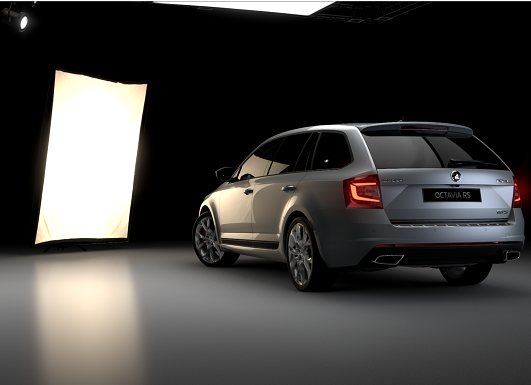VRED 2023.1
Learn about new features and improvements in this release of VRED. For technical details and bug fixes, see the 2023.1 release notes and recommended system requirements to ensure Autodesk VRED products are running to their potential.
What's New in 2023.1 and General Improvements
For Windows users, 2023.1 requires an NVIDIA RTX driver v.511.65 or above.
For Linux users, 2023.1 requires an NVIDIA driver v.510.47.03 or above.
Video Captions: In VRED 2023.1, we have implemented several new features that increase your visual quality and workflows.
Within the new Material Editor, we added a new option for the Plastic material. Now, you can add an additional clearcoat layer. You can adjust several parameters like the thickness, color, or density of the clearcoat. With this new option, you can create, for example, a textured material with a layered clearcoat on top of it. And with the new decoupled Material Editor, you can also set a clearcoat for multiple Plastic materials at once.
We also added the support for the so-called LTC area lights (Linear Transformed Cosines). These lights work for OpenGL and precomputed modes and give you a much closer look to a Full GI rendered result. The changes affect only area lights in OpenGL and don’t affect the raytracing mode. They calculate the behavior of glossy reflections with less noise. You can clearly see the difference of the old and new behavior. This will massively increase your visual quality for real-time visualization. And also, the Visible in Reflections option is now working the same in OpenGL and Raytracing mode!
Also, for OpenGL, we now support render layers. So, you can disable, for example, Visible in Alpha. This is not only a nice to have render feature, this can be very helpful for augmented reality, for example. Now, you can easily make objects invisible and map a part of the virtual car onto a physical object for instance.
For all users of the Varjo XR3 AR headset, we added a static Marker option. In augmented reality mode, we can add markers to track the virtual model, and now you can change the tracking method from predicted, which is the old behavior, which constantly tracks the object, to a static mode, where the tracking is not done constantly.
You can trigger the new modes using the new Python commands. Now, you just need to add them within the script area of a variant set and you can trigger it from there within the VR menu. If you want to use these scripts, just go to the documentation or find them in the Comment area of the YouTube channel.
Thanks for watching the video!
Click the cards below for further information on new features and improvements found in 2023.1.


